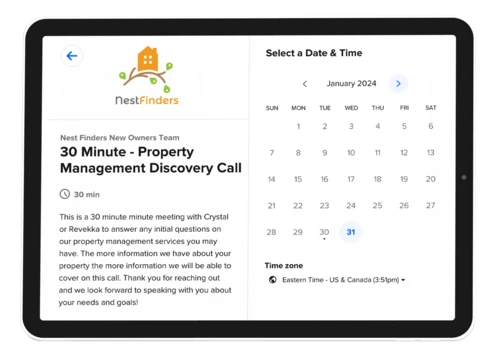Jacksonville is one of the hottest-growing metro areas in the country, with the population increasing by 5% over the past few years. With so many people moving to the area, landlords have plenty of opportunities to find the best quality tenants. Even with high-quality tenants, landlords must protect their investments with rental property inspections. We at Nest Finders like to perform Property Evaluations, as no Property Management company is a licensed "Inspector" Inspectors have tolls to see behind walls, under roofs, foundation issues etc.
Create an inspection routine for your rental properties with these four types of rental property inspections. Please keep in mind neither you or your Property Management Company if you have one are Professional or Licensed Inspector. These are for typically documenting condition and resident damage.
1. Move-In Condition Inspections
A move-in inspection should occur as part of a new tenant moving into the rental property. It's best to do this inspection with the tenant. That way, you can both make notes of the property's condition.
When you hire a property management company, they can do this inspection for you. Their experience is an asset, as they know the essential things to take note of. This will become valuable later when handling the security deposit return.
2. Move-Out Condition Inspections
A move-out inspection is similar to a move-in inspection, but it happens at the end of the lease. It is one of the essential routine inspections to protect your investment. During this inspection, you will use the same checklist you used for the move-in inspection.
That way, you can compare the property's condition to when the tenant moved in. If you find tenant-caused damage that goes beyond normal wear and tear, make a record of it. You will need this documentation when you keep a portion or all of the security deposit.
You have 30 days from the termination of the lease to notify the tenant in writing. If you fail to do this, you could forfeit your ability to keep any of it.
3. Quarterly Rental Condition Inspections
A quarterly inspection doesn't necessarily take place every quarter. It is up to you how often you perform a mid-lease inspection. However, you do not want to do it too often, as it would interfere with the tenant's peaceful enjoyment.
During this inspection, rental landlords check for lease compliance and property conditions. This inspection gives first-time landlords peace of mind.
You can then address lease violations with the tenant. If the property needs repairs, you can make the necessary arrangements.
4. Drive-by Condition Inspection
A drive-by inspection is the simplest type of rental property inspection. You do not need to give the tenant advance notice. You will simply observe the exterior of the rental.
This is a good method for catching things that are out of the ordinary. Perhaps there are signs of individuals not on the lease living at the property. Or the tenant could have a pet that was not approved.
Be careful not to violate the tenant's right to privacy. Driving by too often or stopping and hanging out can interfere with the tenant's peaceful enjoyment.
Perform Rental Property Inspections
Protect your rental investment by performing these rental property inspections. With routine inspections, you will always know the status of your rental property. That way, you can complete the necessary repairs and maintenance.
Performing these rental property inspections can become time-consuming, especially when you own multiple properties. Hiring the team at Nest Finders can simplify rental management. Our experienced team can perform each property inspection type for you.
Always know your property's condition by having the Nest Finders experts perform your rental property condition evaluations.



